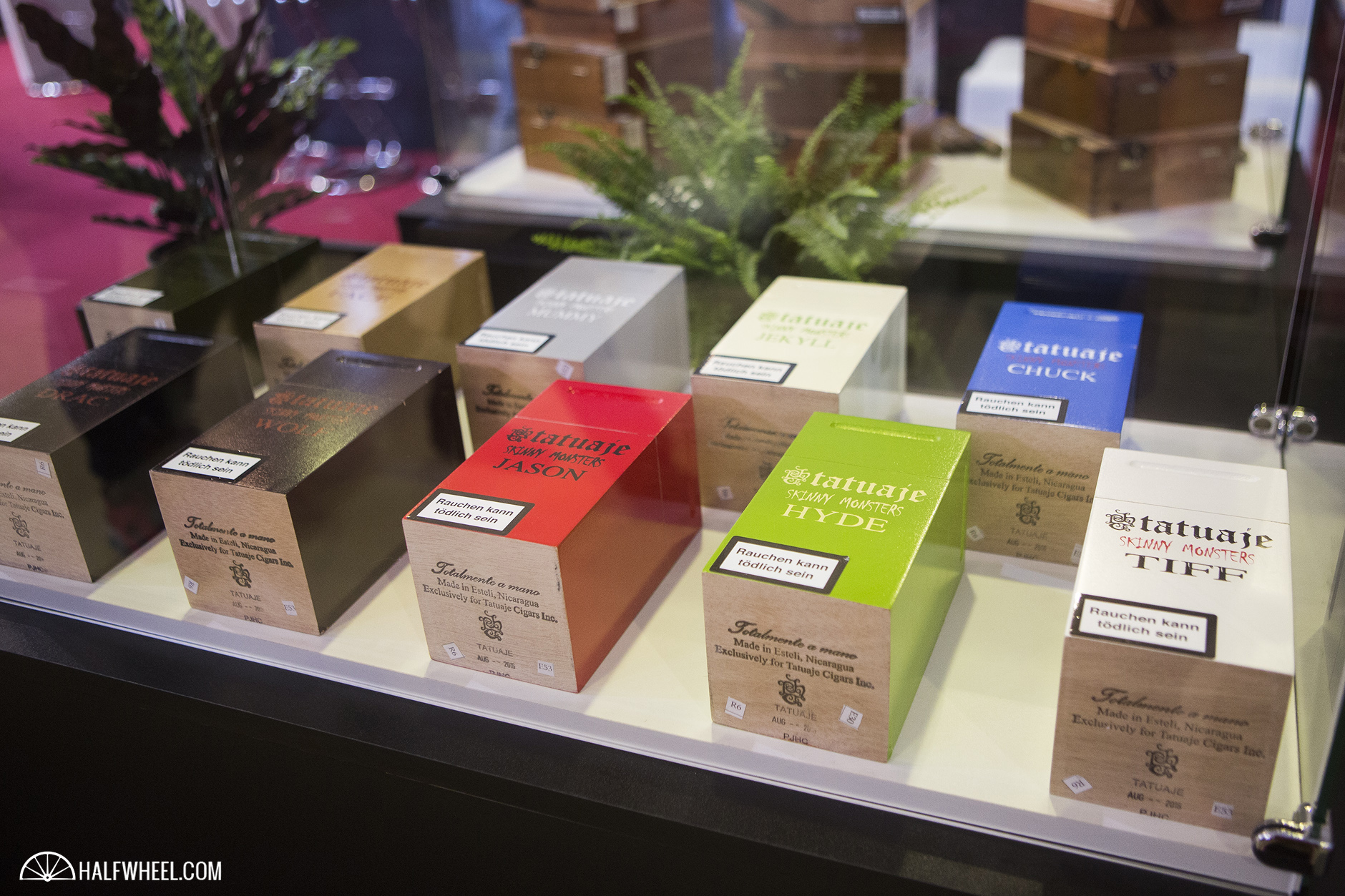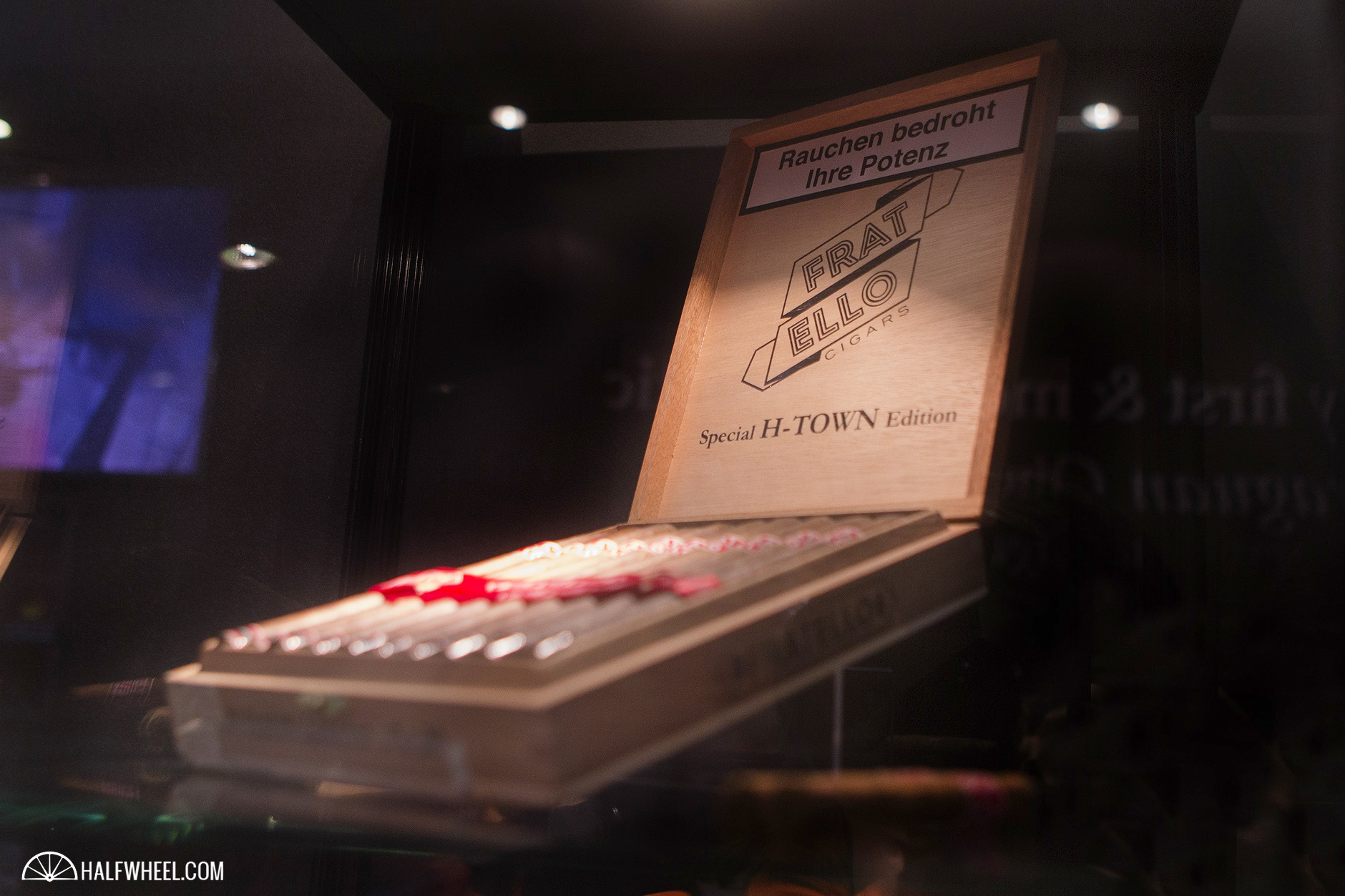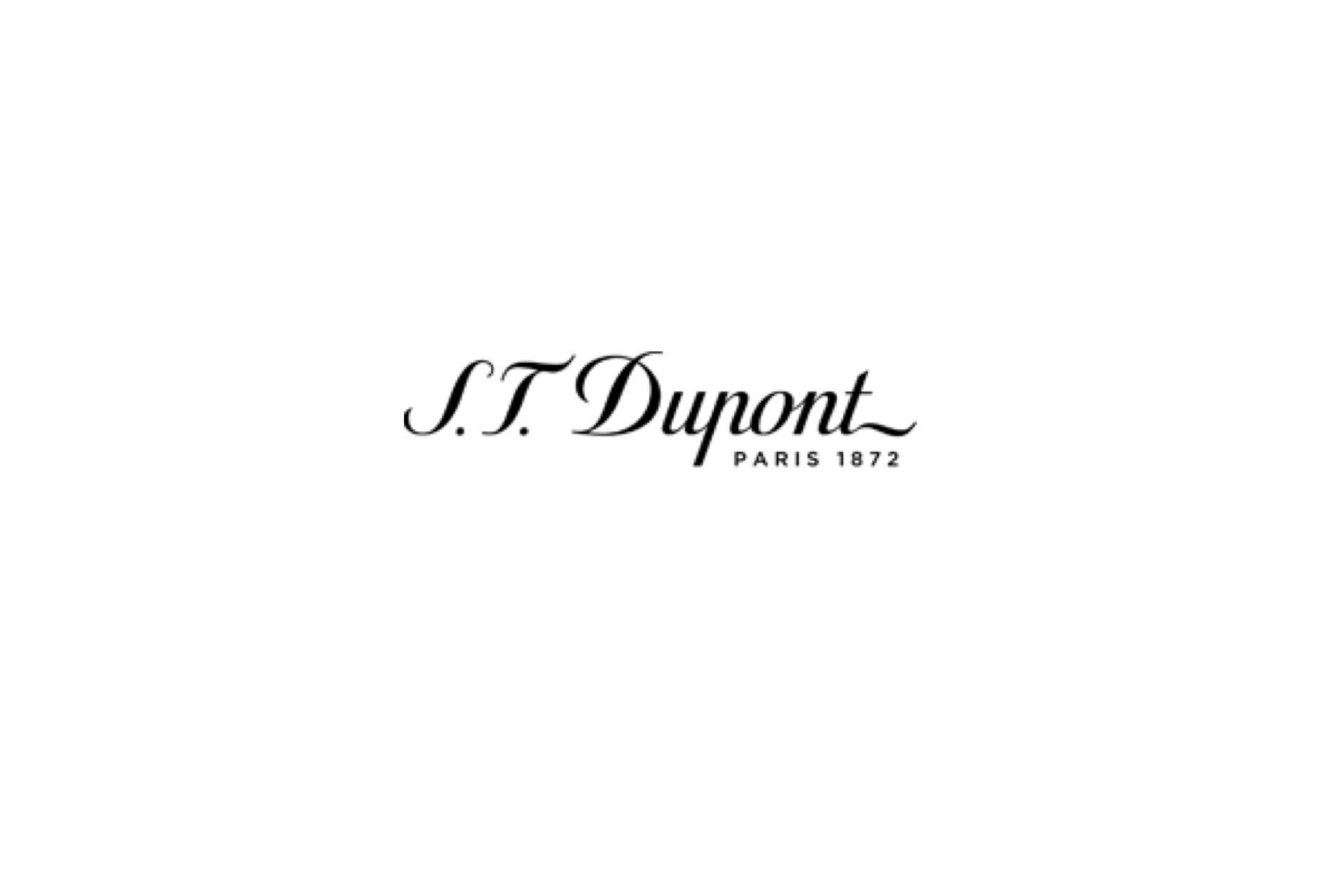Last year, the American media came to InterTabac. This year, the American brands came to Dortmund.
InterTabac is the European tobacco trade show. It’s not the European version of the IPCPR Convention & Trade Show. Rather, it’s the global tobacco trade show. It’s bigger—both attendance and physical size[ref]There were 11,7000 attendees to InterTabac this year, the IPCPR claims just over 2,300 badges for retailers. Even if one triples the amount of badges for IPCPR, InterTabac is still larger.[/ref]—than the IPCPR show and yet, InterTabac very much feels like a club and this year more than any in the five years I’ve attended the September gathering, it felt like there were a lot of new faces.
I’ve summarized InterTabac before, but given the growing belief that Europe is becoming more important for American cigar companies, I’ve decided to paint the best picture of InterTabac and my thoughts on the European market as I can.

THE BASICS
InterTabac is held each year in September in Dortmund, Germany. Readers of this site and followers of my Twitter feed might know of Dortmund because of the city’s soccer, err—football—team, Borussia Dortmund. It’s one of the largest and best football clubs in the world—and the trade show is held literally in the shadow of its stadium.
Unlike the IPCPR Convention & Trade Show, InterTabac is not cigar-focused, rather, it’s tobacco-focused. There are premium cigars, cigarettes, smokeless tobacco, hookah, little/machine made cigars, e-cigarettes/vapor, as well as an extensive roster of other companies that assist in the production and sale of the aforementioned goods. In fact, there’s an entire hall devoted to suppliers, i.e. machinery and packaging items used to produce tobacco products.

HALLS + STANDS
Another big difference between the IPCPR Convention & Trade Show and InterTabac. Whereas the IPCPR show is held in one big open room, InterTabac is divided up into five (or six) larger halls. Cigar and cigarette companies are generally in two halls—though newer exhibitors are found in others—the hookah companies get their own hall and the vaping companies dominate the two other halls. There’s also the aforementioned supplier hall. Mixed in with all those halls are accessory companies and trade businesses, like companies that sell POS systems or walk-in humidors.
For cigar companies, the layout is a bit more complicated as the majority of companies—particularly those that are established in Europe—are not in their own booths, rather, they are in the booths of their German distributors.
The majority of cigar brands that exhibit in Germany are found in one of five booths, or stands as they are called at InterTabac.
Arnold André
In addition to its own brands, Arnold André distributes Joya de Nicaragua and La Aurora in Germany. It has been the distributor for Davidoff in Germany, but Davidoff will launch its own distribution company in 2017. Arnold André also distributes part of the J.C. Newman portfolio in Germany, with the other half being distributed by Kohlhase.
Joya de Nicaragua has its own booth as well as an area within the Arnold André booth.
August Schuster GmbH & Co. KG
Schuster distributes La Flor Dominicana, RoMa Craft and JetLine along with their own brands. In addition, they have a relationship with PCB Tobacco GmbH, a company headed by Martin Schuster which distributes Asylum, CLE, Patoro and Bentley Tobacco.
Don Stefano
The distributor for PDR Cigars, Perdomo, Viaje as well as the Dictador brand.
Kohlhase & Kopp
Far and away the largest in terms of their portfolio Kohlhase & Kopp distributes:
- Altadis U.S.A. Brands (Casa de García, Don Diego, etc.)
- Arturo Fuente*
- Ashton
- Boveda
- Daniel Marshall
- Dunhill
- J.C. Newman**
- Maya Selva*
- Matilde
- Padrón*
- Rocky Patel
- Total Flame*
*Indicates a company that has its own booth outside of the Kohlhase booth.
**J.C. Newman’s portfolio is split between two distributors.
Wolfertz GmbH
Many American consumers have actually seen products produced in association with Wolfertz GmbH. The company has a decade-plus relationship with XIKAR and has worked with the Kansas City-accessory maker in the past.
Wolfertz also has a long list of American-based companies it distributes for:
- A.J. Fernández
- Alec Bradley
- Caldwell
- E.P. Carrillo
- Oliva
- Plasencia
- XIKAR
So five distributors and 30+ brands.
A few very established companies that fall outside of these distributors. My Father and Tatuaje have their own booth and their own German distributor; Drew Estate has its own booth and is distributed by Agio,
There are also the large European-based companies like Scandinavian Tobacco Group (STG), owner of General Cigar Co., Villiger—both of which have large stands of their own.
InterTabac 2016 from halfwheel on Vimeo.
It took me nearly a half hour to walk four of the five halls, up and down, at a distance of roughly 1.4 miles according to my Apple Watch. Note, this doesn’t include one of the five other halls used primarily for e-cigarettes and roll-your-own tobacco and also does not include the supplier show.

THE RELATIONSHIP SHOW
Unlike the IPCPR Convention & Trade Show, InterTabac—particularly for the premium cigar industry—is about relationships. There are German retailers that show up to buy products, but the economics don’t justify InterTabac as a buying show.[ref]As mentioned below, there’s also restrictions on discounting tobacco product in many countries meaning the concept of show specials likely could never come to Europe.[/ref] Rather, InterTabac is about relationships; relationships with both retailers from other countries and Germany that attend to learn more about products, but more importantly, relationships with international distributors.
The contrast between the two shows actually produces a nice balance. Whereas the hustle and bustle of the American trade show means manufacturers are largely focused on clients who are there to spend money; the relationship nature of InterTabac means that people’s busiest days are generally described as a series of meetings stacked on top of one another.
TPD2+
If you think American has regulations on cigars, you have not been to Europe.
Last year’s show was largely focused on how new European Union (EU) regulations would affect cigars. In 2014, the EU passed Tobacco Products Directive 2014/40/EU (TPD2), a new law that required EU member states to largely increase their warning label restrictions. Unlike FDA, TPD2 forces countries to either adhere to a standard EU law or pass specific country exemptions in regards to packaging.
In theory, TPD2 should have made life easier for cigar makers as it would have created standard rules in Europe, but due to different exemptions as well as countries like Spain that still haven’t ratified TPD2 because it doesn’t have a government—there are still a variety of warning label laws depending on the country.
TPD2 certainly didn’t kill the cigar business in Europe, but now the question has already turned to what the next step will be. Executives at European companies told me they think plain packaging is that next step and it will come to some countries within the next five years.
While it’s unfortunate and time-consuming, the next set of laws for Europe could keep some cigar manufacturers out. The real question is not how restrictive the packaging laws become, rather, how diverse they will be. The processes of registering products, keeping various languages and sizes of warning labels and then remember how to apply said labels is not only time-consuming, it’s expensive. At some point, it could become too tedious to keep warning labels just for Slovakia as an example and a company may decide to pull out of the market simply because of the restrictions.[ref]California is the only state that has additional warning labels beyond the federal level.[/ref]

IS THERE ANYWAY THIS BUBBLE DOESN’T BURST PT. II
Ahead of this year’s IPCPR Convention & Trade Show I wrote about a bubble that I believe is facing the American market due to the plethora of new cigars and brands in face of stagnant consumption.
After last year’s InterTabac, I wrote that Europe becoming the savior for lost sales and revenue because of American FDA regulations was illogical.
And now I wonder if the bubble in Europe isn’t more fragile than that of the one in the U.S.
Even with FDA regulations, the American market is still the holy grail of the cigar business. Yes, it’s getting more expensive. Yes, it might be very difficult to introduce new product. But, it’s still the largest market in the world—by a landslide—and it has stable consumption patterns, healthy margins on both the manufacturing and retail levels and the cost of selling cigars is substantially cheaper than European markets.
And it also doesn’t have Cuban competition, at least legally.

Over the last decade, American-based companies have been able to make Europe something beyond just a rounding error in their annual revenue, but it’s been a war of attrition to get to this point and it’s not getting any easier.
In almost every market, the growth of non-Cuban cigars has come at the direct expense of Habanos S.A. sales. European premium cigar consumption is not growing at any rate that would explain the success companies like Alec Bradley, Oliva, Perdomo and Rocky Patel have had. Rather, younger consumers and retailers have begun to open up their minds to different types of cigars.
The largest question for non-Cuban cigar sales in Europe and elsewhere internationally is whether the established companies that have grown their business in Europe over the last decade feel any impact from the brands that are beginning to enter the market. My guess is that some of them will feel it, maybe not in international revenue decline, but at the very least with slower growth.
In terms of companies totally new to InterTabac, I spotted Cornelius & Anthony, Dunbarton Tobacco & Trust, Fratello, Jas Sum Kral, Leaf by Oscar and Nat Sherman at InterTabac for the first time, though the latter seemed to be just taking it in. There were other companies like Boveda, Quesada and RoMa Craft Tobac who are not new, but had their own booths for the first time that I remember.
There’s no question that Cuba has had some very bad crops. That could at least temporarily help non-Cuban growth as basic logic tell us there will be less Cuban cigars made over the next few years, not to mention even more questionable construction. But if this year’s InterTabac is any indication, the coming years could easily see the largest competitor for non-Cuban cigar brands in Europe transition away from Habanos S.A. to the non-Cuban brands themselves.
And then of course there’s the reality of Europe.
If halfwheel were to be based out of any European Union country, we would not be able to have ads for cigar companies. Tobacco advertising within the European Union is much more restricted, though things like billboards are still legal.
While U.S. companies and consumers grapple with new FDA restrictions on free samples, retailers in Europe have long been subject to even more restrictive rules that prevent them from even legally doing promotions like buy three cigars, get one free.
The basic costs of travel in Europe is much costlier compared to that of the U.S. And then of course there are countries like Spain, where retailers operate on government restricted margins. Combine that with the aforementioned TPD2 and packaging restrictions and the travel and what is very clear to anyone that’s ever attempted selling cigars in Europe is that it is much more challenging and costlier to do it in Europe than it is in the U.S.
After five years of InterTabac I’m left with the basic idea that it’s a three-year plan. With the exception of Robert Caldwell, who by the end of 2016 will have spent months traveling the continent promoting his brand this year alone, it’s not something that I’ve seen anyone pull off with any success in a shorter period of time.
This year was the first year I didn’t watch a retailer walk up to the Padrón booth stating they’ve never heard of Padrón. But like every year I’ve been in Europe, I watched plenty of American-based companies sit down with individuals who claimed to be the biggest distributor in XYZ country, only to find out about 15 minutes later that the person was a retailer, who is thinking about becoming a distributor.
There are certainly segments of the European market that are undeveloped, but even when someone can correctly identify what those are—the fragmented nature of European cigar markets means that a concept is going to catch fire quickly like say the NUb, 6 x 60 and limited edition trends we’ve seen become rapidly popular in the U.S. over the last decade.
All doom and gloom aside—it’s another 3,000-word Friday editorial at halfwheel—I love InterTabac.
Sure, it does not hurt that the trade show is a five minute walk from the soccer team I watch play on television 30+ times per year; but I do love the trade show for what it is.
The obvious attraction for me personally is that it’s not the four-day sprint after the six-week marathon that the IPCPR Convention & Trade Show is—but I’m also fascinated by the recent journey of the cigar industry’s birthplace.[ref]Some will have objection to the cigar industry’s birthplace not being Cuba. I think the birthplace of the cigar is certainly Cuba. However, the industry was developed by Europeans.[/ref] I love seeing it grow, advance and challenge the American industry, myself included, but for those looking towards it as the savior to their FDA problems, I suggest you find a different church.



